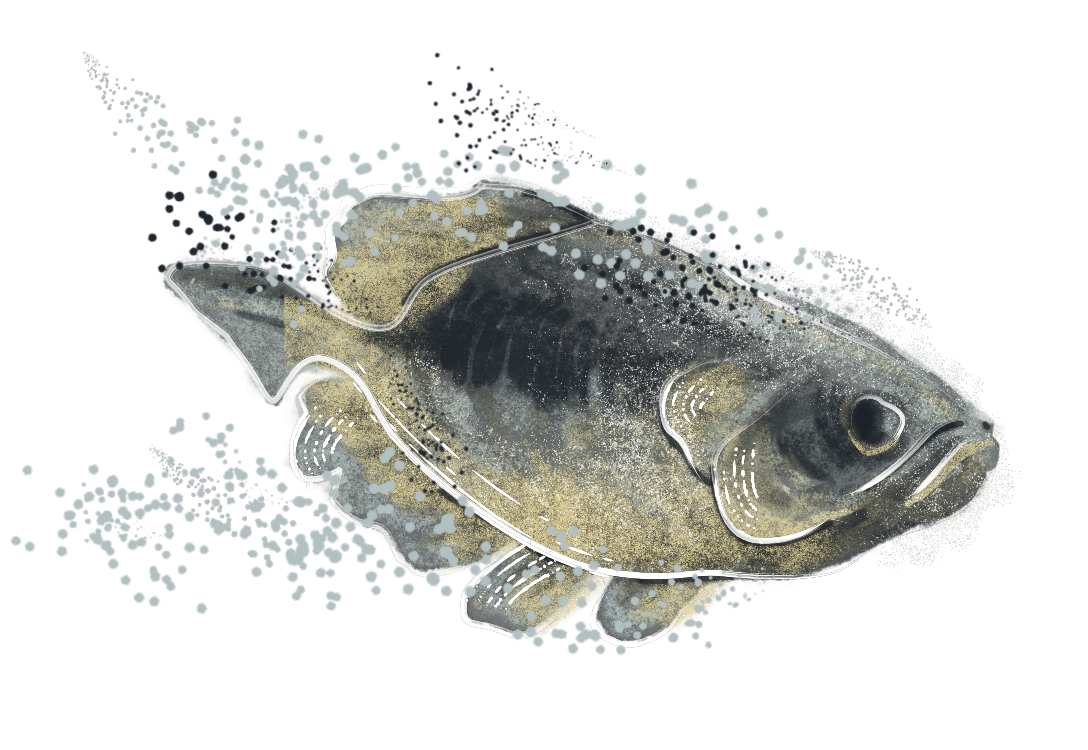
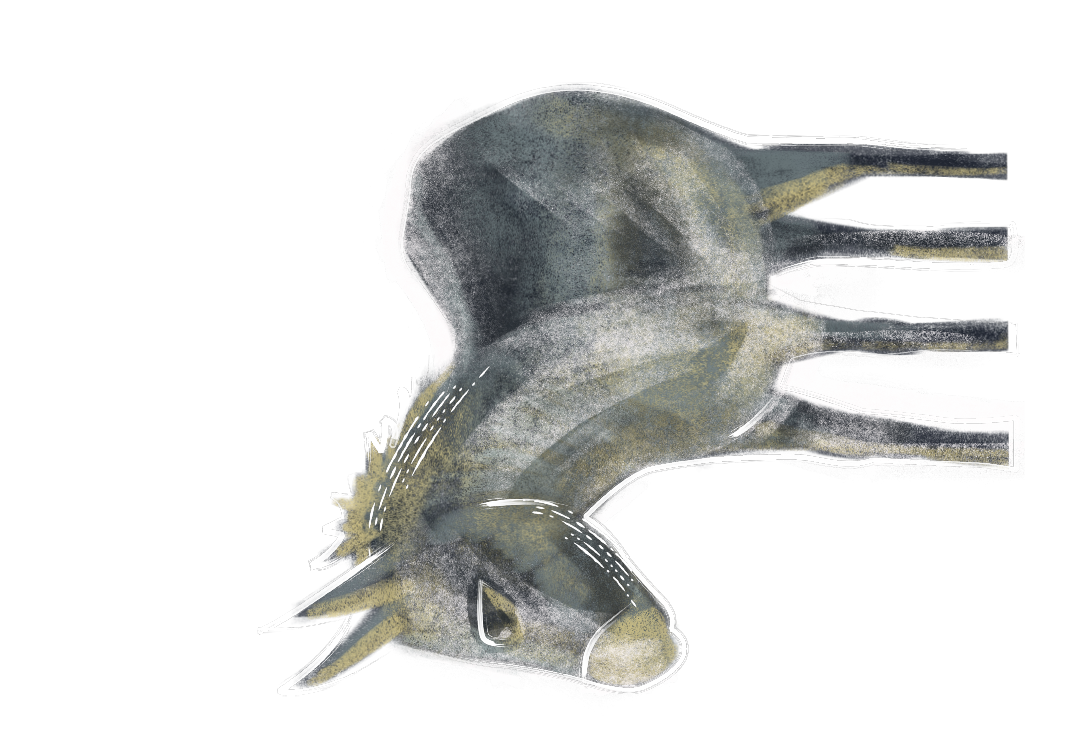
Doing, being, belonging and becoming – and the question of “what if“
Filip Maric, PhD, Associate Professor, UiT The Arctic University of Norway
Enrique Henny, Tedes – Terapias para el Desarrollo, Chile
Nick Pollard, PhD, Senior Lecturer, Sheffield Hallam University, UK
Sandra Schiller, PhD, Lecturer and Honorary Professor, HAWK University of Applied Sciences and Arts, Hildesheim/Holzminden/Göttingen Germany
The current need for transformative change across healthcare and society is widely recognised in light of diverse social, ecological, and health crises, and it confronts human vulnerability (Featherstone, 2024; Huntjens, 2021). Other future factors are the demographic shift that determines demand for occupational therapy, including an ageing population and rising numbers of disabilities in young people, technological changes, and changes in the positioning of the profession as it evolves around changing needs, and the evolution of occupational science alongside existing social sciences and epistemologies on which it must depend. This calls for an otherwise imagination in occupational therapy based on the creative and critical capacity to envision alternative possibilities beyond existing realities and dominant paradigms. An exploration of new ways of being, doing and navigating everyday life that challenge or subvert established norms and power structures.
The question of “what if?“ has always been central to imagination.
When Anne Wilcock (1999) set out the forward-looking narrative of human occupation as doing, being and becoming, she referred to this as “science fiction.“ This analogy underscores the potential of speculative fiction to be thought-provoking or mark identifiable moments when key concepts are first imagined or their potential uses first defined.
Science fiction – or speculative fiction – asks the question “what if?“ and anticipates change, exploring proposals for alternative realities. A hallmark of science fiction is that whatever is presented in the narrative has some kind of rationale (Bould, 2024).
Through imagined futures, science fiction reexamines historical narratives and present-day paradigms, prompting us to reconsider the lessons of the past in light of potential futures. By projecting forward into realms of possibility, science fiction not only entertains but also functions as a philosophical tool that interrogates the constraints of our current reality (Ryder, 2020).
Moreover, science fiction often addresses fundamental questions of existence and purpose, encapsulating the human condition in narratives of exploration, discovery, and sometimes apocalyptic foresight. By doing so, it creates a speculative space where the future remains unfixed, inviting readers and viewers to contemplate what might be – in contrast to what is.
This narrative flexibility fosters a dialectical process, where each imagined future reflects back on the present, urging caution, innovation, or transformation. Thus, science fiction not only forecasts future scenarios but also engages in a dynamic conversation with the present and the past, guiding collective and individual introspection about the direction and rationale of future endeavours. Through ist intricate weave of imagination and critique, science fiction becomes a vital medium for exploring the philosophical dimensions of time, change, and life. In this context, the utopian and dystopian imagination of science fiction has served as a mirror reflecting both our most aspirational visions and our deepest anxieties.
Science fiction narratives often illuminate and amplify current societal faultlines that represent the ideological tensions and contradictions within a culture, where dominant and marginalised perspectives intersect and sometimes clash, offering a speculative space to examine how these tensions might evolve in the future (Sinfield, 1992). By doing so, science fiction can critique present realities and provoke thought about potential resolutions or exacerbations of conflicts evolving around issues such as technological control, ecological degradation, or social inequality. Projecting current concerns into future scenarios can challenge readers to reconsider the direction of societal change.
Science fiction is also a disreputable and resistive punk genre which enlivens the streets. Some classic science fiction authors were members of groups like the Futurians, often working-class adolescents who distributed their own amateur, mimeographed magazines in various countries (Edmonds, 2019; Leslie, 2023). However, the punkness of these social origins may also rub metal-studded shoulders with narrative elements from longer-established vernacular traditions of egalitarian, picaresque and tragedic folk cultures (Featherstone, 2024; Sadowski, 2025).
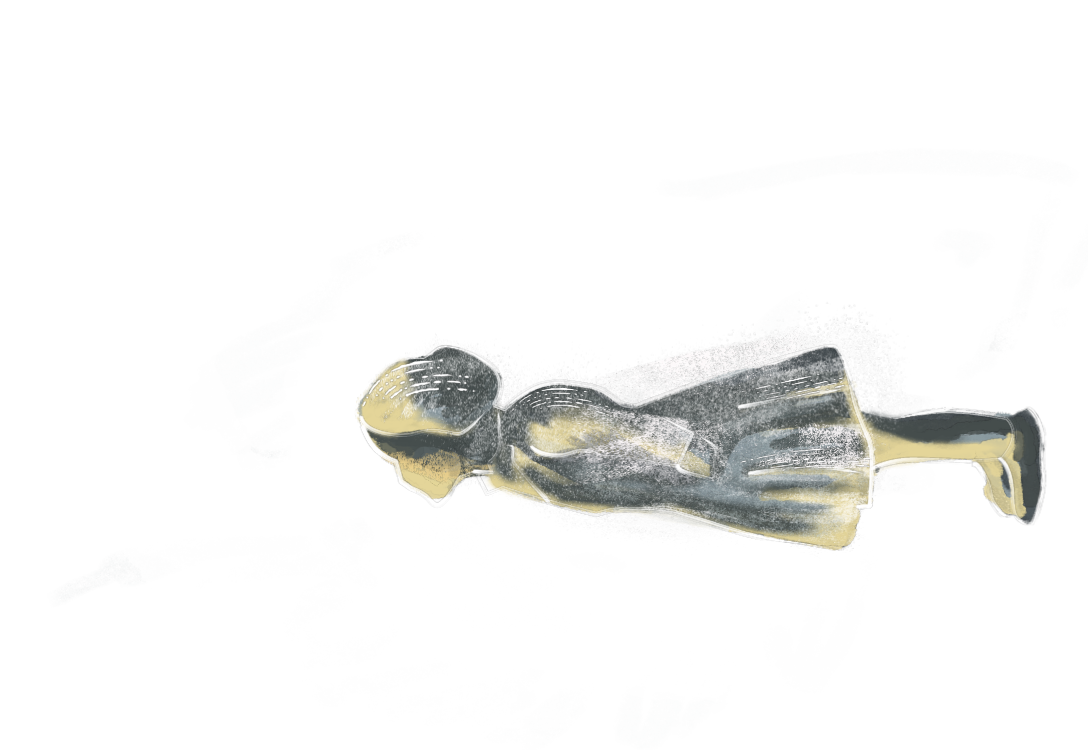
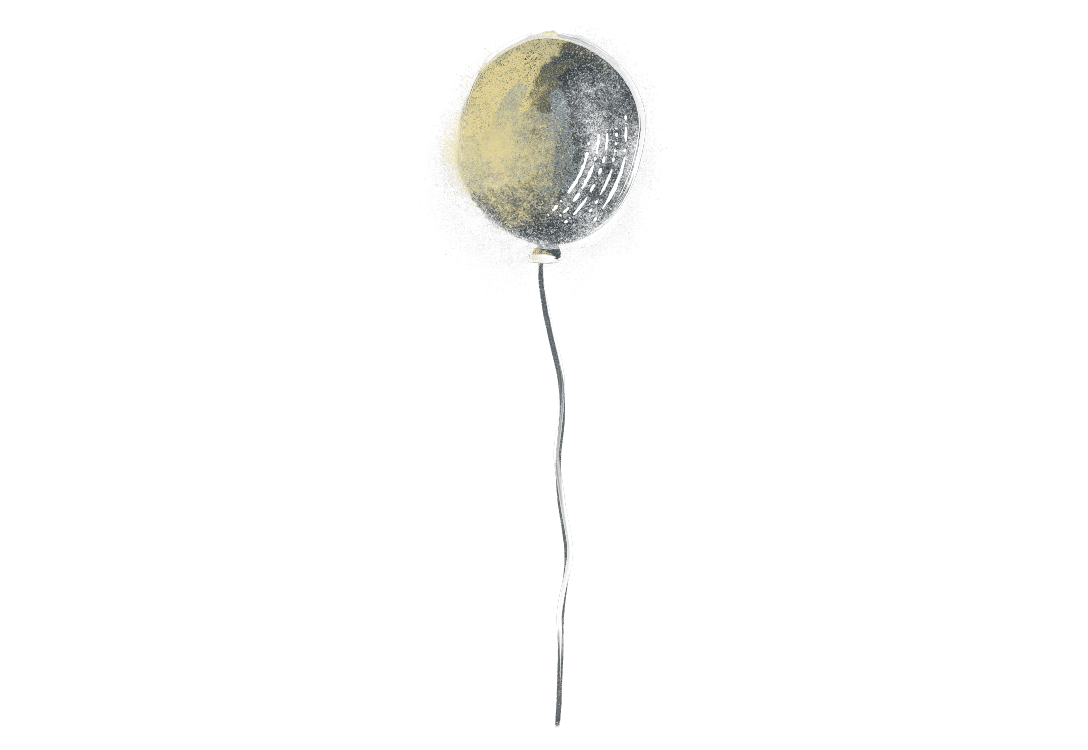
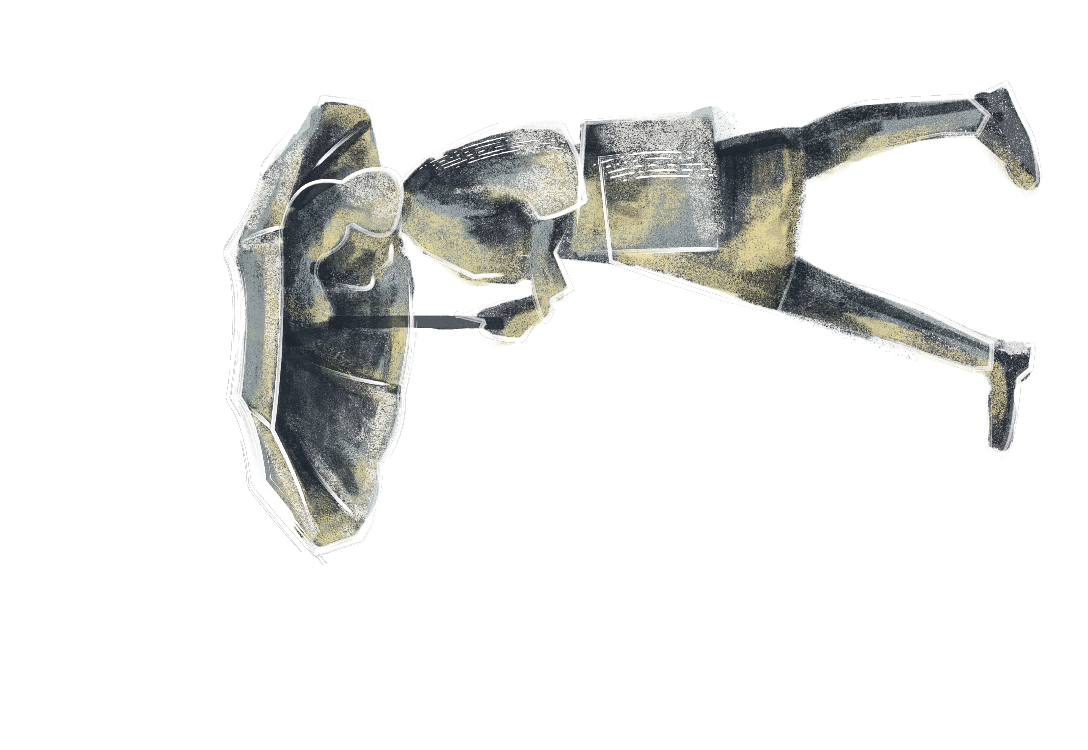
For occupational therapy, whose focus is meaningful participation as a determinant of health, the diversity of future possibilities is particularly interesting for its scope of practice. Readers of science fiction may recognise many features of their present-day everyday lives in previously read or watched comics, books and films: cashless transactions, online meetings and computerised appliances, for example, have become commonplace in our everyday occupations. Dystopian aspects may also be part of the future foretold in fantasies: pervasive surveillance and control systems for populations, giant world-dominating corporations, the beginnings of the privatisation of space travel and exploration for deep-sea and extraterrestrial mining by superwealthy individuals.
Through this historical experience of the future in everyday life occupations, science fiction has a particularly intergenerational appeal and value as a vehicle for exploring eco-social transformations (Aula and Masoodian, 2024).
The desire for utopian change has been a respectable philosophical expression for centuries, with antecedents in ancient literatures, such as Homer (Chakraborty, 2022; Featherstone, 2024). Utopian visions have served as sites for mindful experimentation, imagining what the future could be like if worked out on principles that seem to promote convivial ways of living, such as the settlement movement that nurtured some of the original pioneers of occupational therapy. Given its concern with how people participate meaningfully in life, occupational therapy owes part of its philosophical origins to utopian movements that recognised the need for social and economic changes as capitalism developed its modern form (Wilcock 2001; 2002). The profession partly originated in the utopian visionaries of the 19th century who imagined and tried to effect new ways of living convivially (Jennings, 2016; Jackson, 2019; Morris 2002[1890], Wilcock 2002). For 19th century utopians, (or ‘punks’ as has been claimed for Morris (Ollendorff, 2021), new occupation-based relationships were based in new technological approaches such as the techniques of everyday living developed by the Shakers or Fourierians; these stories explore new techniques, technologies and even ways of existing in the occupations of the future.
While some of these enacted utopian visions were the projects of influential and wealthy personalities setting up social experiments in Europe and colonial settings in North America, there have also been resistive utopias or quilombolas established by black people escaping colonialism and slavery in parts of South America, especially Colombia and Brazil (Marquezini et al 2024; Mosquera-Vallejo, 2025). Unlike most northern examples, some quilombola communities continue to exist in the Brazilian interior and remain largely unincorporated into the federal state. They demonstrate that everyday occupation is not only about doing, being, becoming and belonging (Wilcock and Hocking, 2015), but a territorial concept, an emancipated and radical coimaginatory space of transformations enacted in real time.
Throughout the history of capitalism the relationship between occupation and space has been reimagined by a succession of radical peasant or working class resistors who have sought to live more collaboratively, whether protopunk pirates – some of whom established their own ‘Libertalian’ collectivised anarchistic or democratic republics (Sadowski, 2025), or peasants fighting land enclosures and demanding free expression (Featherstone, 2024). It is from developments like quilombolas and indigenous communities in other parts of Latin America that the ideas of la vida sabrosa (tr: ‘the tasty life’) and buen vivir (tr: ‘living well’) have developed to be taken up in decolonised approaches to occupational therapy practice (Morán & Ulloa, 2016; Mosquera-Vallejo, 2025).
Over the last few years, healthpunk has emerged as a, thus far largely experimental space for exploring the potential of using science fiction to envision otherwise narratives for the future of health (https://healthpunk.co/). Trialled with students in physiotherapy, international healthcare professionals, learners in planetary health, public health professionals, and the communities they serve, healthpunk is increasingly enabling health professionals to engage with the urgent task of ecological, social, and health transformation, in light of today’s complex challenges. In its name, healthpunk draws not only on the rich and diverse tapestry of science fiction genres in general, but also “punk” movements within science fiction, including cyberpunk, steampunk, ecopunk, and especially hopepunk, first used by author Alexandra Rowland in 2017.
Over the last few years, healthpunk has emerged as a, thus far largely experimental space for exploring the potential of using science fiction to envision otherwise narratives for the future of health (https://healthpunk.co/). Trialled with students in physiotherapy, international healthcare professionals, learners in planetary health, public health professionals, and the communities they serve, healthpunk is increasingly enabling health professionals to engage with the urgent task of ecological, social, and health transformation, in light of today’s complex challenges. In its name, healthpunk draws not only on the rich and diverse tapestry of science fiction genres in general, but also “punk” movements within science fiction, including cyberpunk, steampunk, ecopunk, and especially hopepunk, first used by author Alexandra Rowland in 2017 (Romano, 2018). Hopepunk marries the realisation that, while some things have already changed and are likely to change even further in considerably negative ways (like already ongoing climate change, biodiversity loss, and social disruption), it nonetheless remains necessary to imagine and so work toward alternative futures, pasts and presents, with the fundamental “punk” sensibility that is an encouragement to think otherwise from the status quo that we inhabit.
With Occupational Punk Vol 3, we specifically invited occupational therapy students, clinicians, educators, researchers, professional representatives, policymakers, and service users from around the world to send us fictional stories located anytime in the future, in which the work of health and social care is deliberately focused on responding to social and ecological challenges and supporting better ways of living and being healthy together. We asked writers to envision how the occupational therapy profession might facilitate harmonious everyday lives in our diverse and even multispecies communities; how we might view and support everyday odysseys through a lens of possibility and change amidst rapid societal, ecological, and technological disruption, and to explore dynamic, malleable and transformative ways of occupying space and time. In ‘Co-Creating a Short Program in Occupational Therapy to Support Sustainable and Just Occupational Transitions’, for example, Drolet presents a radical occupational utopia envisioned by an educator and aimed at generating a counterpoint to the pervasive contemporary social and economic reality. Taking a different angle on these themes, Kühne’s ‘Revue Francophone de Recherche sur les Occupations – Anno 2151’ excavates future archaeological findings of a research journal on occupation, suggesting that interspecies cooperation will have been incorporated within the next century.
To reprise Wilcock and Hocking (2015), occupation concerns a narrative experience of doing, being, becoming and belonging, not merely in a lifetime but over the course of what has recently been termed the Chaoscene (Read, 2025). While Featherstone (2024) anticipates the Anthropocene coming to a close, and many of the stories that follow confront that possibility, others explore possibilities of human survival and further evolution through everyday odyssey. Buschner’s ‘Outside’ presents a vibrant account of possible ways of life and the particular collaboration of occupational therapy with other professionals in the everyday life of another era. Margot-Cattin, Gaber, van Niekerk, Vrkljan and Gyger, the authors of ‘Dans un pays … Au-loin : Extraits d’un journal intime non découvert et non daté, provenant d’un futur lointain, tel que partagé par Kaitlyn Imbiss (18ans)’ introduce us to supported life in a dome, with an occupation-guided adventure into the apparent natural outside. In the face of the uncertainty of the virtual, the rich reality of nature is presented.
The narratives in Occupational Punk Volume 3 engage with transformation processes across the micro, meso, and macro levels of action. Menneson’s ‘Let’s Eat – A journey of self-determination’ ventures into the personal and the everyday, imagining technological dependence as an impediment to a full life. Here, occupational therapy is envisioned as a potential answer that emphasises the power of doing everyday things with one’s own hands and mind. Taking a somewhat dystopian starting point, ‘The Great Reset’ by Albuquerque and Albuquerque takes us to a time when humanity has handed over supreme power to a super machine intelligence that, however, enters into conversation with an occupational therapist, thus producing an unexpected turnaround.
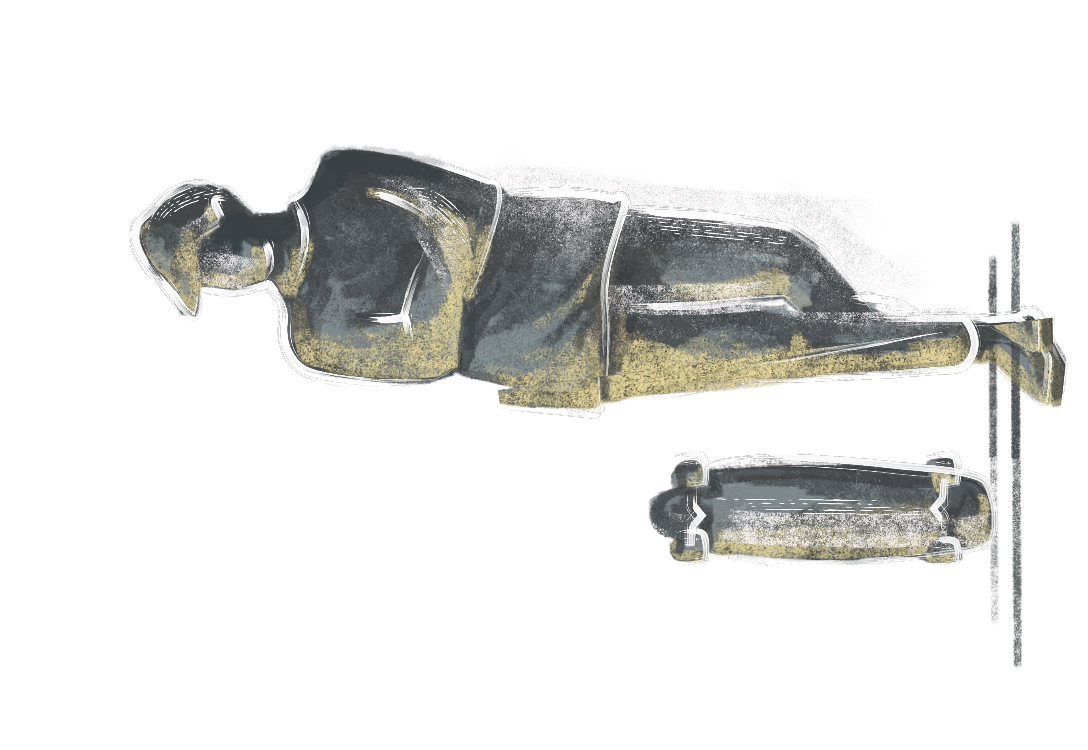
Other stories in Occupational Punk Volume 3 explore how change, whether intentional or inadvertent, occurs and describe the arenas of action available to various protagonists. Central to these narratives is the inquiry into the agency and transformative potential possessed by humankind in general and by occupational therapists in particular. In ‘Otro Cielo es Punksible’, Rivera Lopez presents a story of bodies and community in a world scourged by its own social organisation, and thus reveals the value of recognising and experiencing connection and collective occupations. Bilat’s ‘Comment retrouver du sens et de la sérénité dans un monde en changement’ shows a synthesis of dystopia and utopia and the potential of occupational concepts at the personal and community level.
Tellingly, the stories transcend the focus on occupational therapists to include service users, significant others, members of civil society and inhabitants of our planet as they all grapple with adversarial circumstances. In Gutiérrez Monclus’ ‘Pamelú’, we meet future humans who face the anguish of an inexplicable and frightening world, yet experience a personal change that, through the magic of the poetic, promises new perspectives for humanity.
As intended in the engagement with healthpunk, the stories in this volume also emphasise that even in the harshest of conditions, the flame of hope must not, and indeed, need not, be extinguished. Saïd-Gagnés story ‘Transhumance’ shows us the rebirth of hope in the worst of circumstances, from the occupations that persist, despite the technocratic weight that the future would entail. Some narratives take the liberty of positioning occupational therapy or its professionals, perhaps with a touch of self-irony, as potential saviours of the world as we don’t yet know it, Everyday Value, written by Yoo, for example, presents a gentle and hopeful history of occupational therapy education in a not-so-distant future filled with novelty and continuity.
In contrast, other stories challenge occupational therapists to confront the disquieting realisation that they have been part of the problem rather than the solution, as for example with Pollard’s ‘In the Land of the Jumblies’ that explores the complexities of occupation as a central and universal concept of the discipline with ferocity and humor. Other tales sketch such a bleak future that it is left to our own imagination to determine whether a happy ending is still conceivable. Alterio’s ‘The SoulCraft Rebellion’ and McLean’s story ‘Found’ would suggest as much in their own ways. Be it in an instance when moral commitment impels an occupational therapist to act amidst deleterious social structures, or an instance where AI therapy going wrong is intercepted.
All in all, the stories in Occupational Punk Volume 3 invite us to reflect on the ethical obligations and moral dilemmas that occupational therapists face as they navigate the complex ecosystems of everyday living, both today and in the future. Engaging with these dimensions not only deepens our comprehension of the profession‘s role in present and future societal change but also fortifies the commitment to pursue actions aligned with justice and equity. This involves a conscious departure from ‘practice as usual’ towards a practice that is both counter-hegemonic, liberating, and focused on the process of ‘unbecoming’ – actively working against taken-for-granted worldviews and professional roles – while accompanying the everyday odyssey.
As with previous Healthpunk volumes, the present volume also closes with four commentaries provided by colleagues from Japan, Canada, Brazil, and Chile. To begin with, ‘We and Our Future Technologies: A parental approach to stewardship and co-creation’ by Elke Steckkönig takes up critical questions about artificial intelligence that seem to have moved so many of the stories in our volume. Continuing on these crossroads of fact and fiction, Ryoko Tomizawa’s reflection on the Fukushima earthquake of 2011 highlights how ‘fiction is stranger than fact’ – as the disaster made evident that longstanding preconceptions about people with mental illness were proven fictitious and thus overturned in response to with beneficial implications for people, communities, and occupations. In ‘Sobre imaginação política e a reivindicação de nosso potencial de construir mundos’, Aline Godoy-Vieira reflects on the importance of reclaiming our imaginative capacities because of their political significance, as an act of critical resistance and a necessary precursor to convivial world-building in the face of today’s polycrisis. Finally, Turcotte’s ‘Catastrophizing: An ode to despair’ in turn, questions whether salvation will indeed come from fiction, or science for that matter, or rather from an otherwise way of living in and with catastrophe.
The stories and commentaries in Occupational Punk Volume 3 thus provide a broad spectrum of fields of tension, hope, questions and uncertainties that will undoubtedly push and pull readers’ imagination and urge to action in many different directions. We close the volume with an appendix that gathers the call for stories to the volume (in the four languages in which it was published), because the very diversity of its contributions extends the same invitation to its readers as to those who have responded to its original call: to to envision new ways to navigate our everyday odyssey amidst rapid societal, ecological, and technological disruption, and to explore dynamic, malleable and transformative ways of occupying space and time.
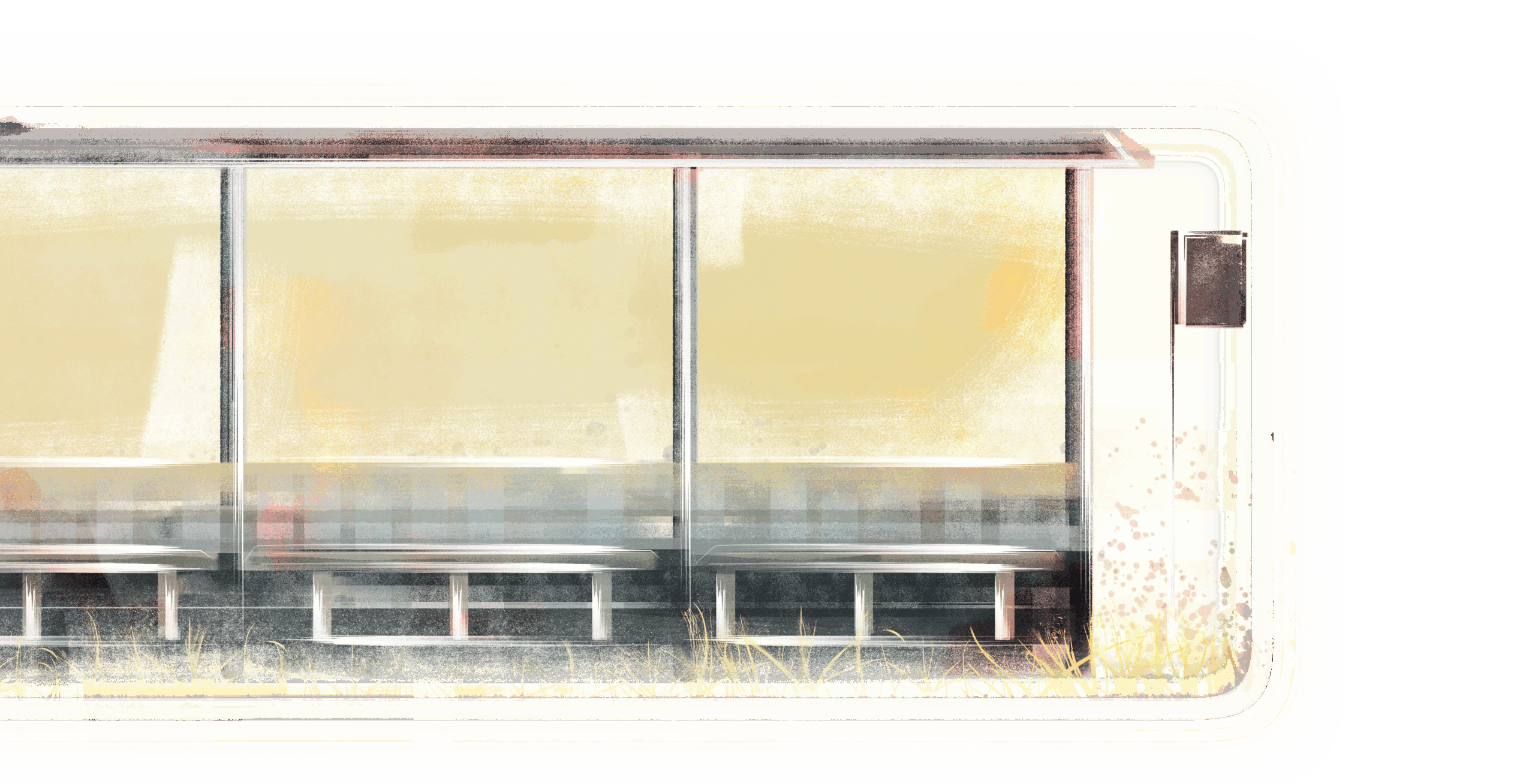
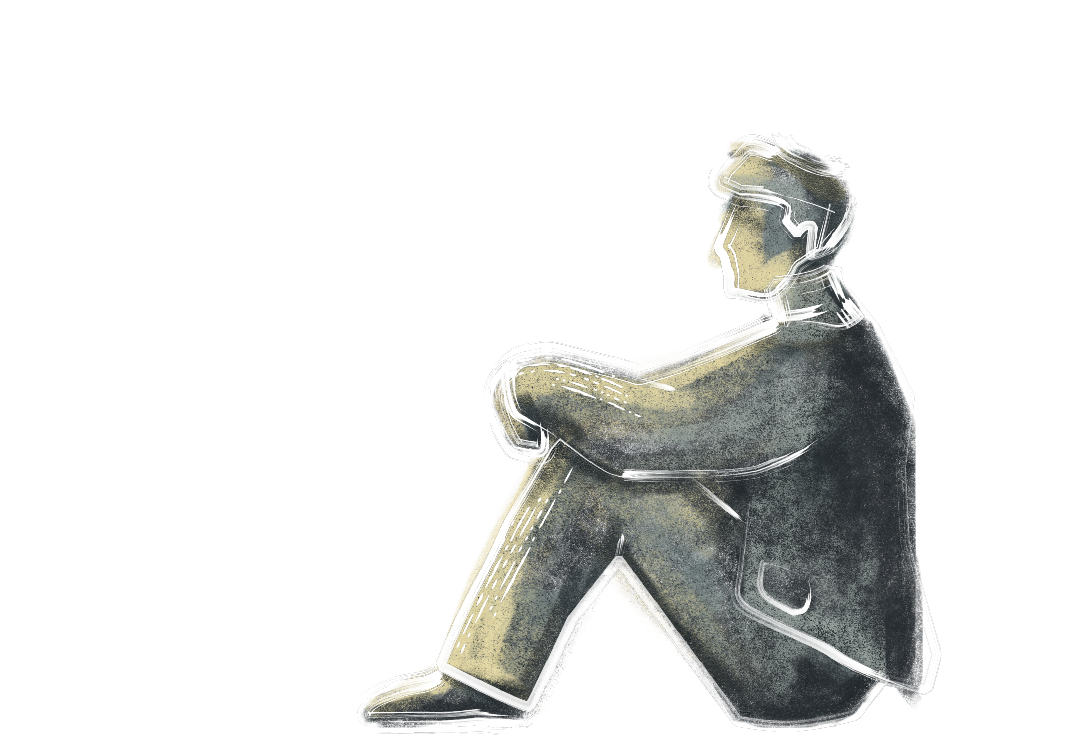
References
Aula, I., & Masoodian, M. (2024). Creative Co-Imagination in Transgenerational Comics Workshops. Sociological Research Online, 0(0). https://doi.org/10.1177/13607804241259733
Bould, M (2024). Defining science fiction. In Bould, M., & Shaviro, S. (Eds.). This Is Not a Science Fiction Textbook. MIT Press.
Chakraborty, S. (2022). Imagination is the Power of Myth, the Rest is Painted with a Touch of Science Fiction: A Study of Mythology and Science Fiction. Comparative Literature: East & West, 6(2), 130–138. https://doi.org/10.1080/25723618.2022.2106663
Edmonds, L. (2019). Fanac in Isolation. In C Lam, J Raphael (eds). Aussie Fans: Uniquely Placed in Global Popular Culture, (pp. 19-30). University of Iowa Press.
Featherstone, M. (2024). The tragedy of utopia in the age of the Anthropocene: Beyond dystopia, despair and catastrophic futures. European Journal of Social Theory, 27(2), 332–351. https://doi.org/10.1177/13684310241234180
Huntjens, P. (2021). Towards a natural social contract: Transformative social-ecological innovation for a sustainable, healthy and just society. Springer Nature.
Jackson, H. (2019). American Radicals: How Nineteenth-Century Protest Shaped the Nation. Crown.
Jennings, C. (2016). Paradise now: The story of American utopianism. Random House.
Leslie, C. (2023). Archeology of the Future. In From Hyperspace to Hypertext: Masculinity, Globalization, and Their Discontents (pp. 175-235). Springer Nature Singapore.
Marquezini, H. C. A., Guimarães, L. D. V. M., & Barreto, R. D. O. (2024). The Decision to (Re)Exist: Histories and Organizational Dynamics within a Quilombola Community in Minas Gerais, Brazil. Organizações & Sociedade, 31(109). https://doi.org/10.1590/1984-92302024v31n0006en
Morán, J. P., & Ulloa, F. (2016). Perspectiva crítica desde latinoamérica: hacia una desobediencia epistémica en terapia ocupacional contemporánea/Perspectiva crítica desde a América Latina: uma desobediência epistêmica na Terapia Ocupacional contemporânea. Cadernos De Terapia Ocupacional Da UFSCar, 24(2), 421–427. https://doi.org/10.4322/0104-4931.ctoarf0726
Morris, W. (2002 [1890]). News from nowhere. Broadview Press.
Mosquera-Vallejo, Y. (2024). Multiculturalismo y territorio en las geografías negras de Colombia. Latin American and Caribbean Ethnic Studies, 20(1), 87–102. https://doi.org/10.1080/17442222.2024.2308476
Ollendorff, G. (2021). William Morris: la révolution au service de l’art. Revue du Crieur, (1), 62-77.
Read, R. (2025). Welcome to the Chaoscene: The climate crisis is here. In order to thrive in these dangerous and precarious times, we must build resilient communities. Aeon. https://aeon.co/essays/to-survive-the-chaoscene-we-will-need-resilient-communities
Romano, A. (2018). Hopepunk, the latest storytelling trend, is all about weaponized optimism. https://www.vox.com/2018/12/27/18137571/what-is-hopepunk-noblebright-grimdark
Ryder, M. (2022). Lessons from science fiction: Frederik Pohl and the robot prosumer. Journal of Consumer Culture, 22(1), 246–263. https://doi.org/10.1177/1469540520944228
Sadowski, M. M. (2025). Pirate Imageries and the Law: Utopias, Seven Seas and Sunken Treasures. International Journal for the Semiotics of Law – Revue Internationale De Sémiotique Juridique, 38(4), 1357–1395. https://doi.org/10.1007/s11196-024-10176-6
Sinfield, A. (1992). Faultlines: Cultural materialism and the politics of dissident reading. University of California Press.
Wilcock, A.A. (1999). Reflections on doing, being and becoming. Australian Occupational Therapy Journal, 46, 1-11. https://doi.org/10.1046/j.1440-1630.1999.00174.x
Wilcock, A. A. (2002). Occupation for health: Volume 2: A journey from prescription to self-health. College of Occupational Therapists.
Wilcock, A. A., & Hocking, C. (2015). An occupational perspective of health (3rd ed.). Slack.
